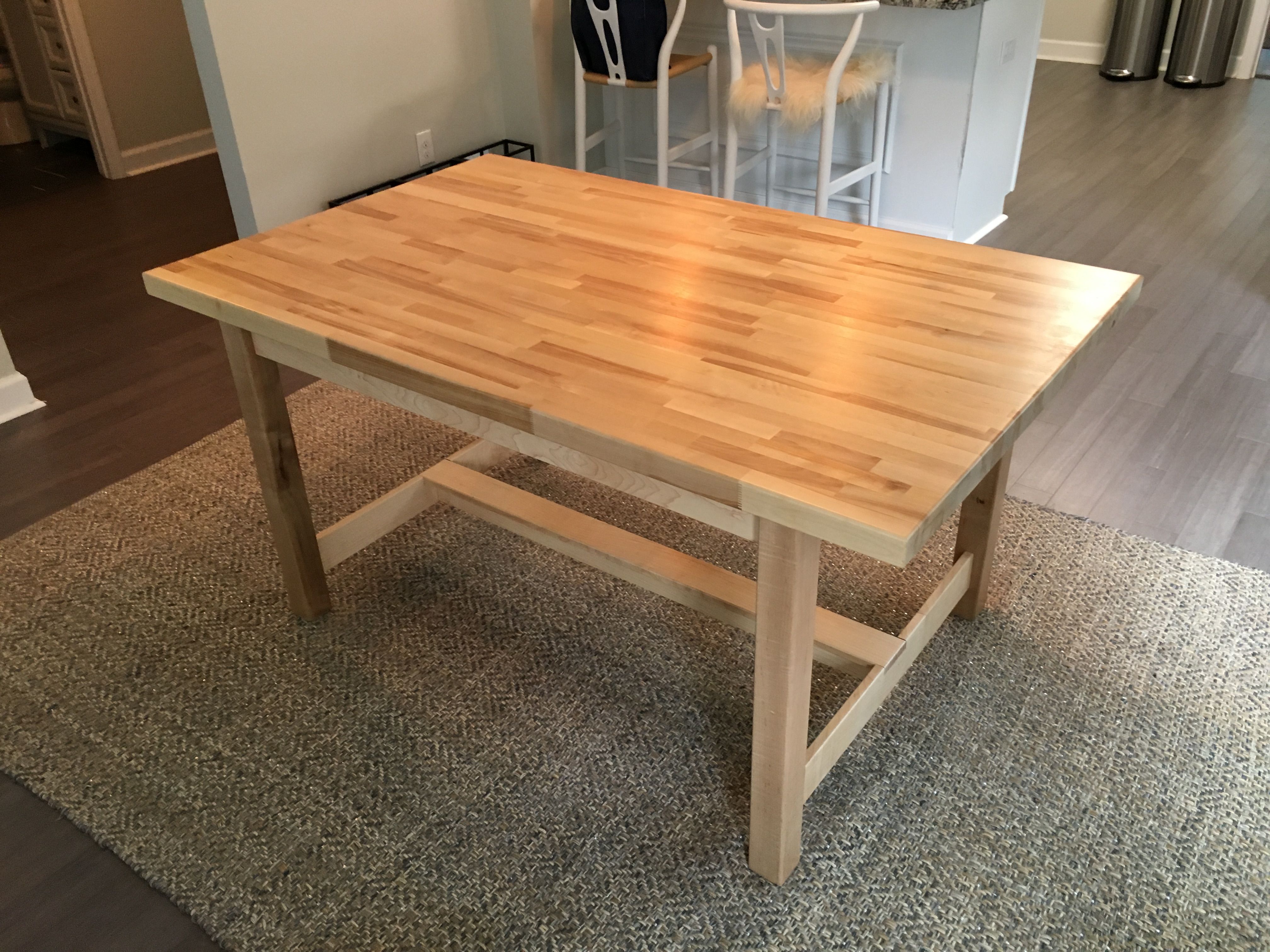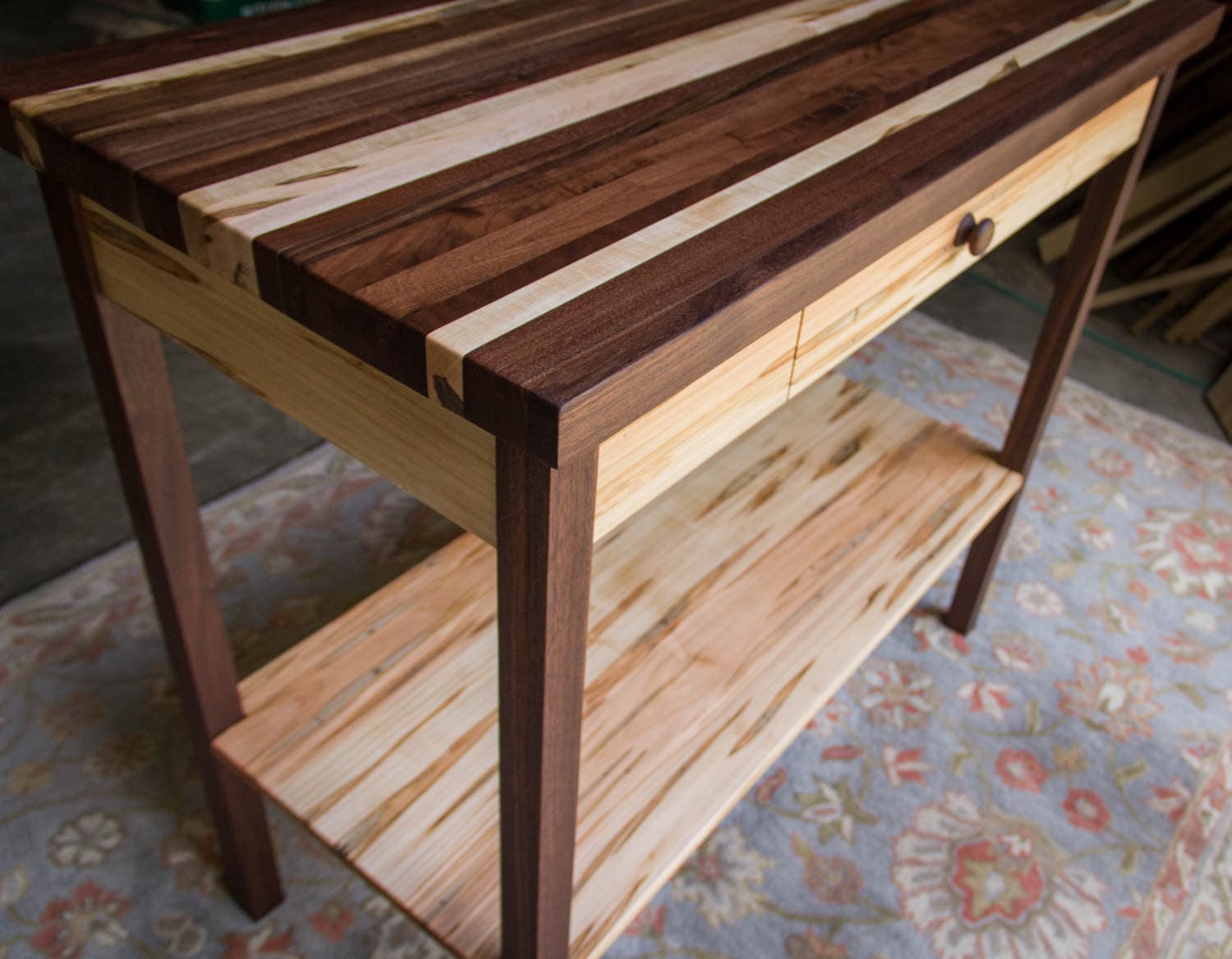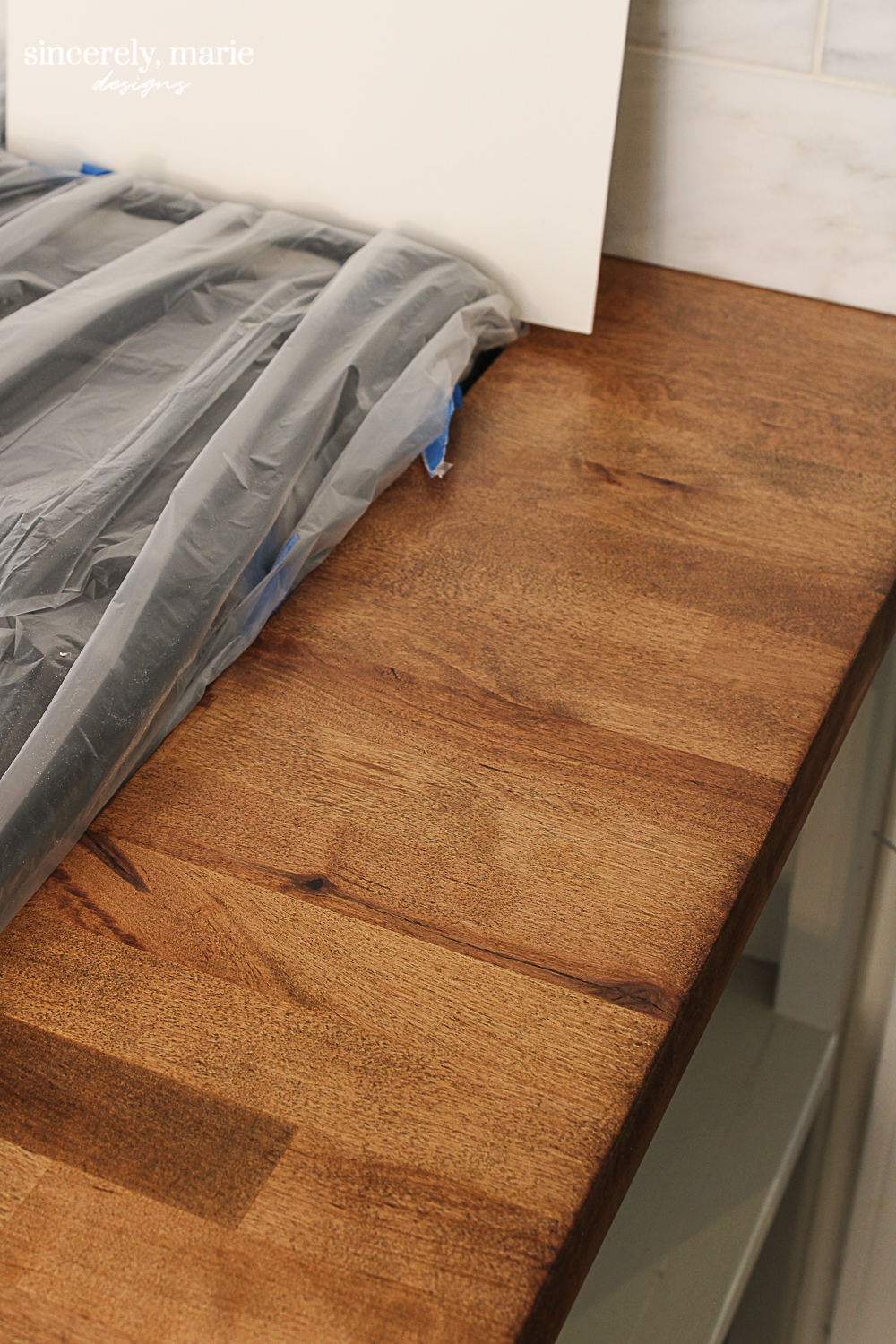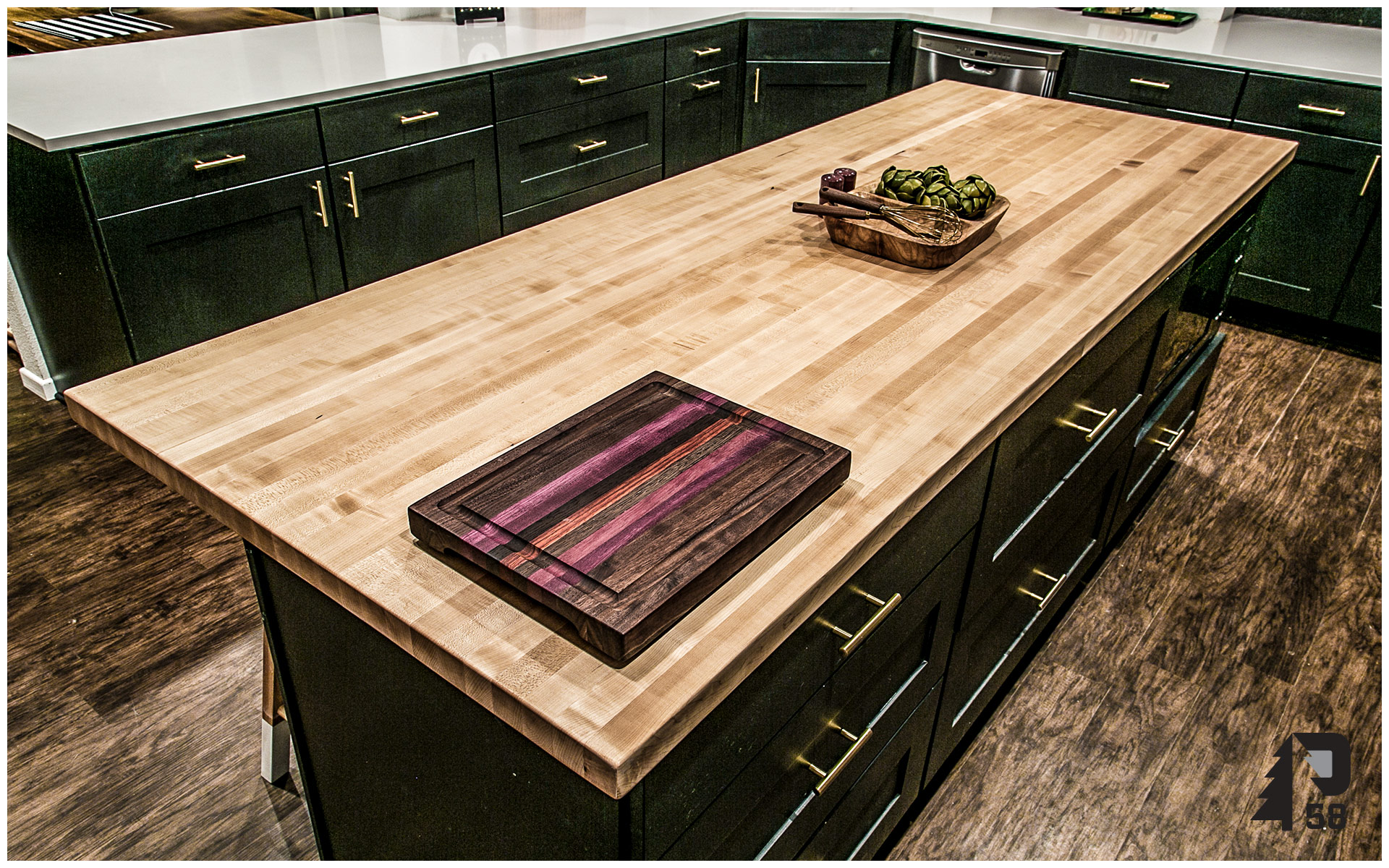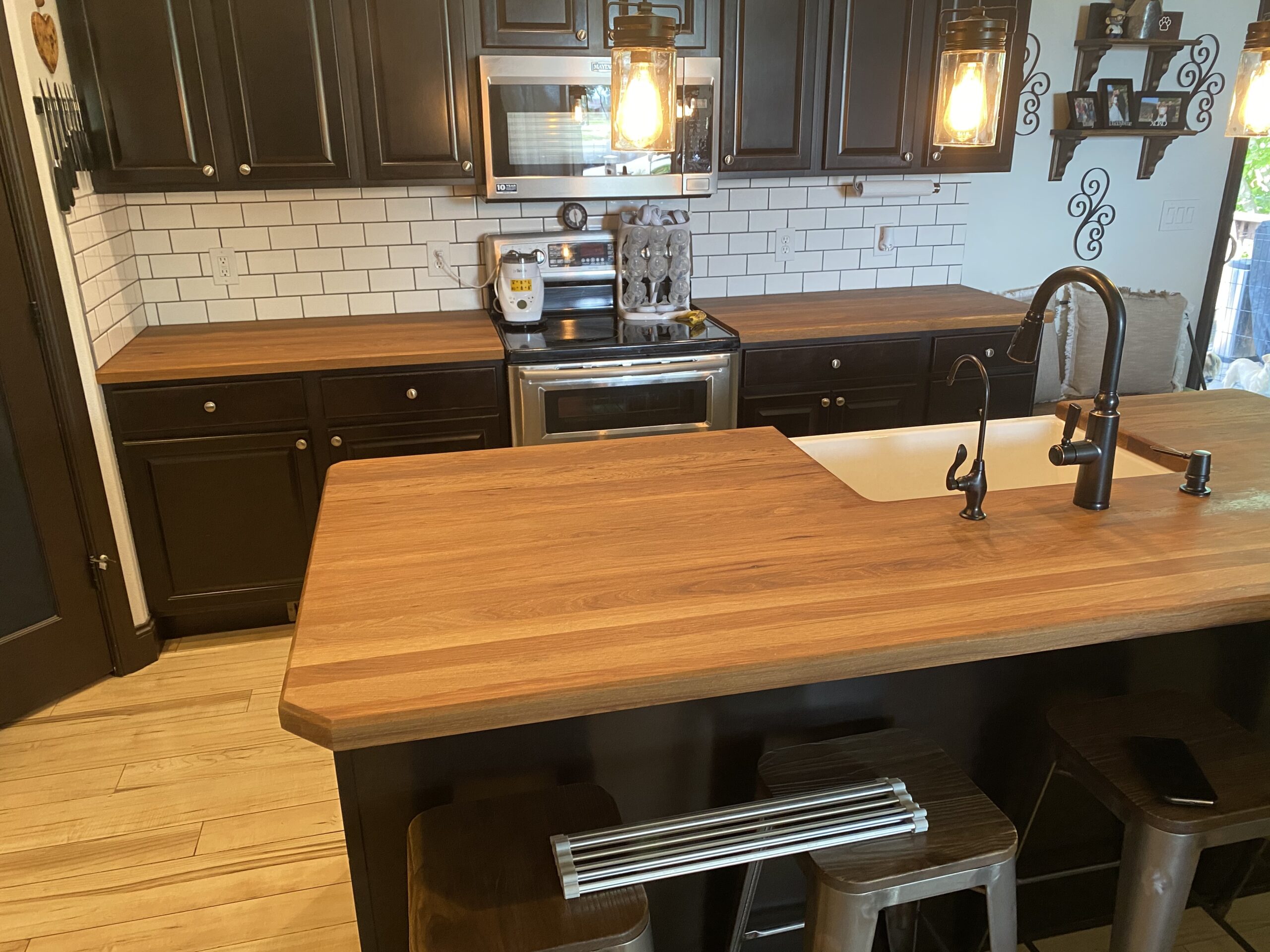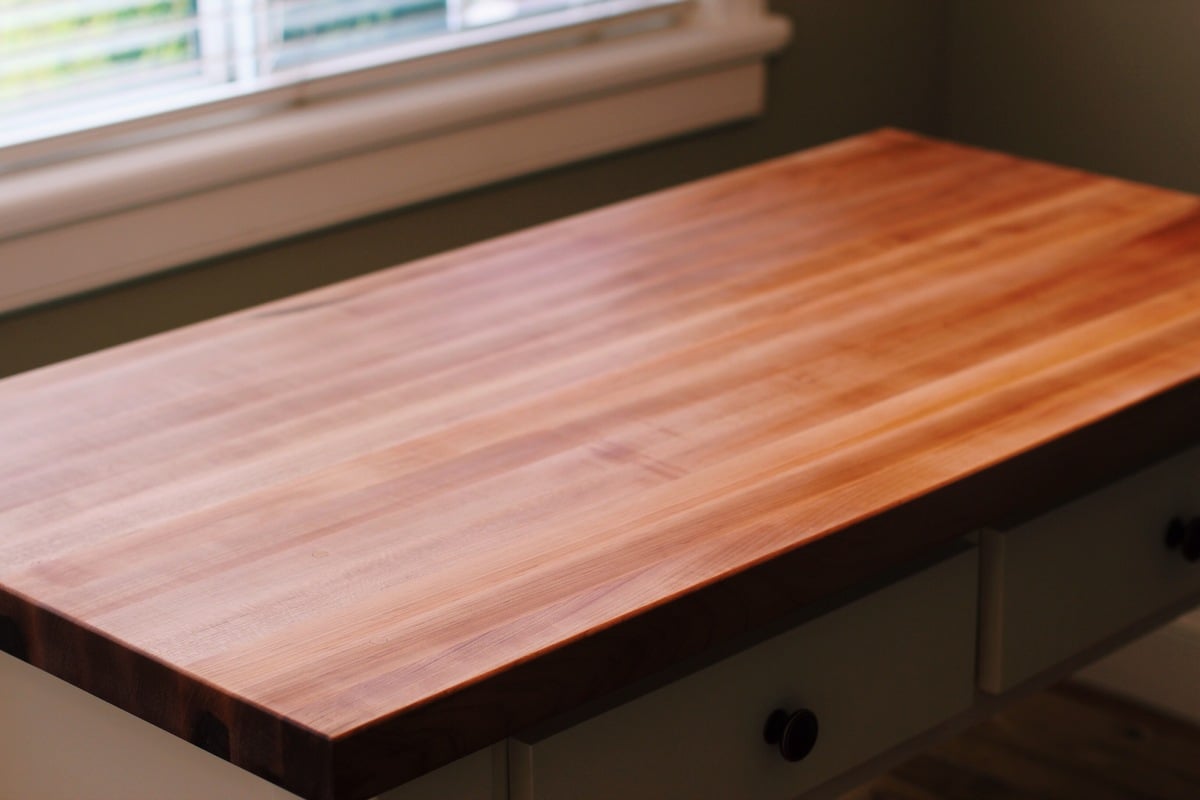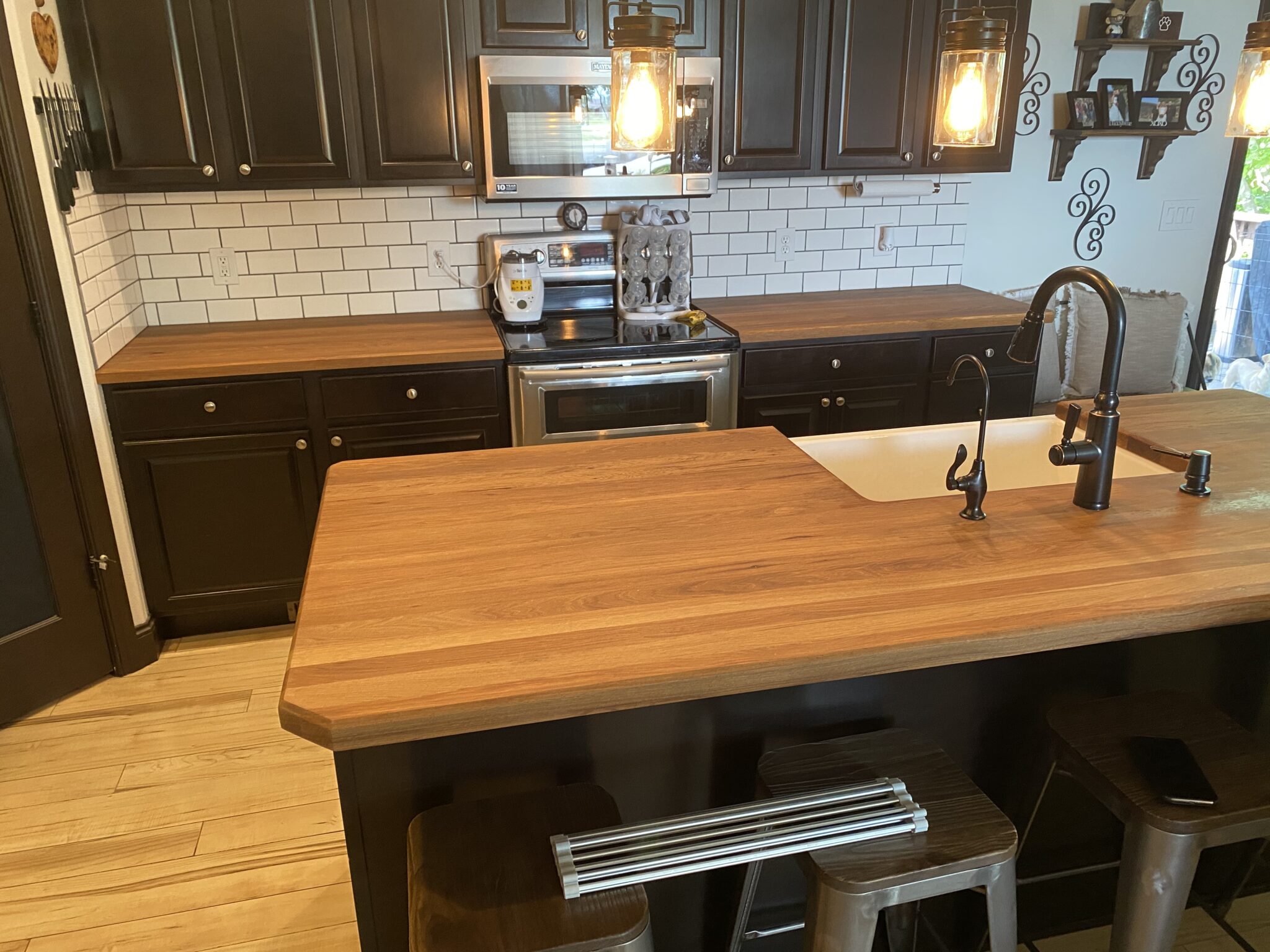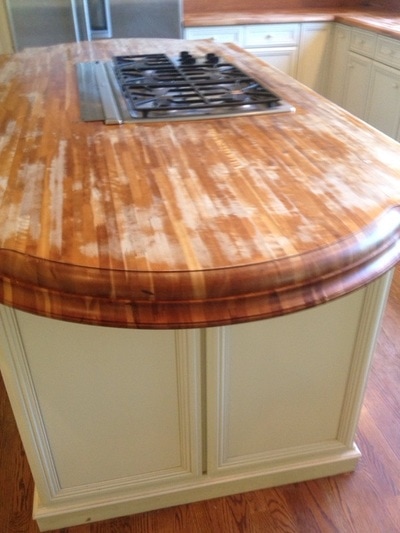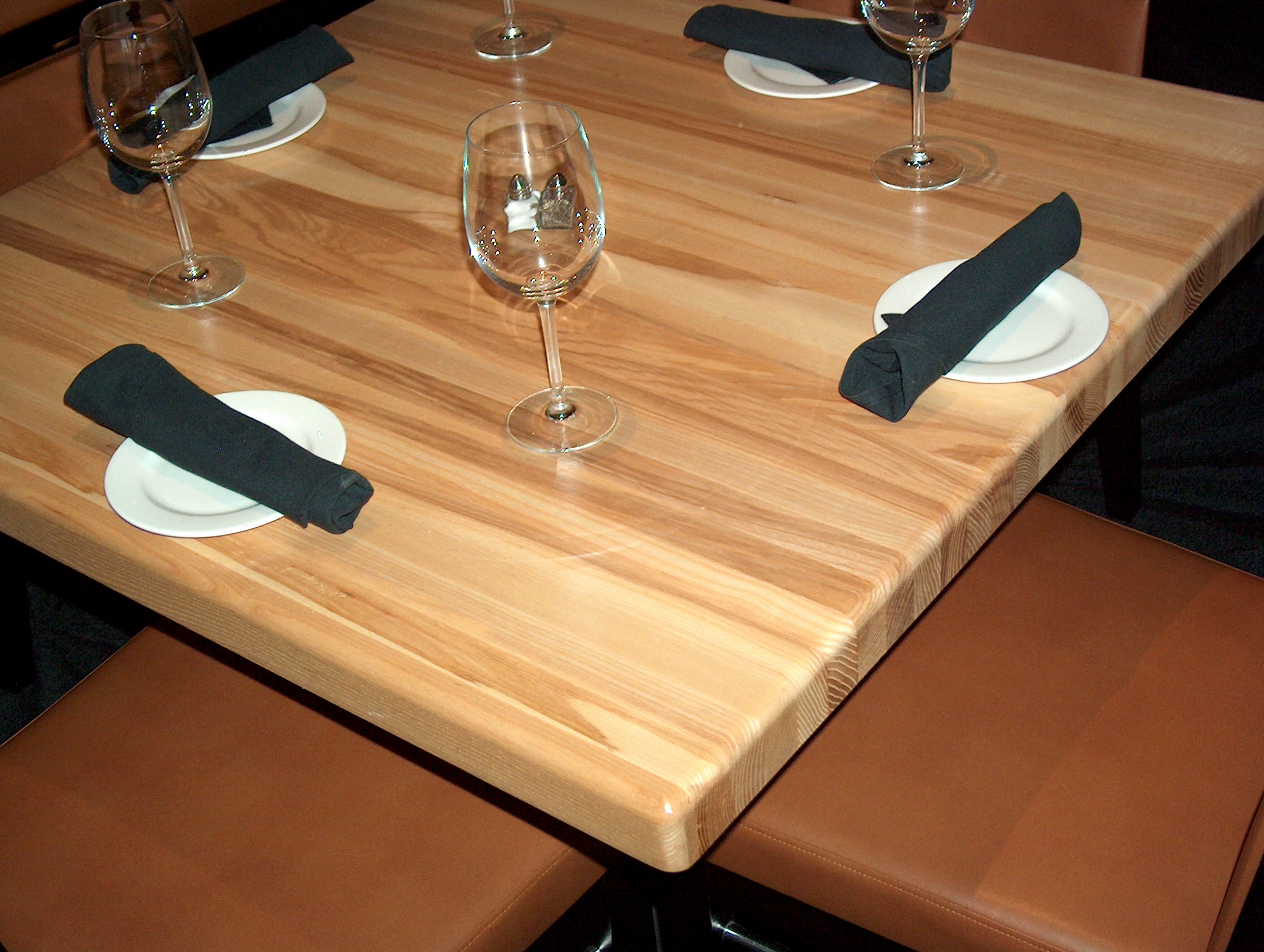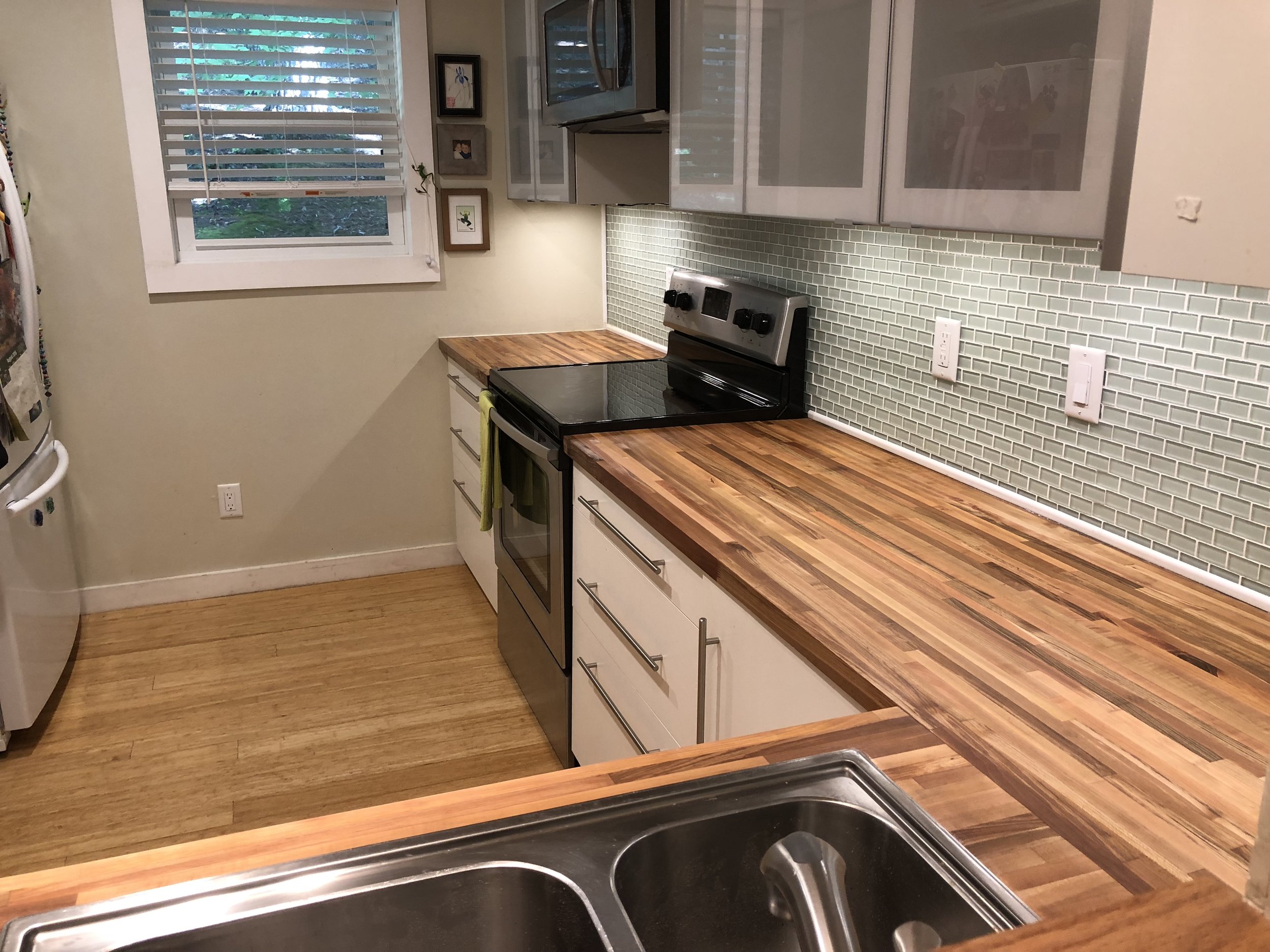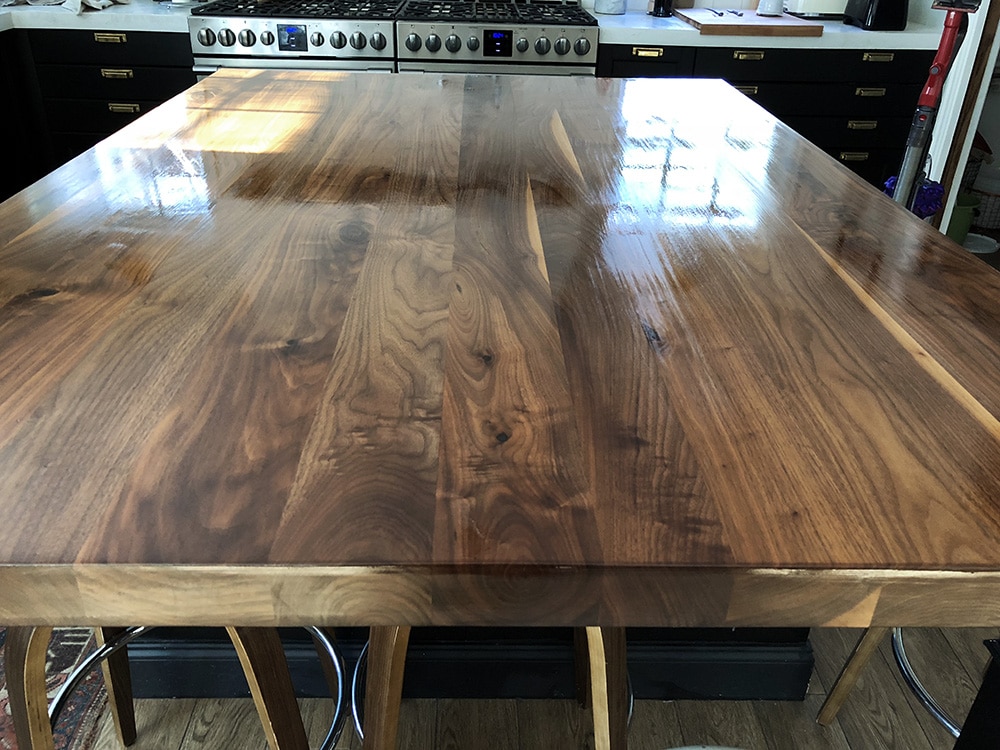Refinishing a butcher block kitchen table is a great way to give new life to an old piece of furniture. Whether you have a family heirloom or snagged a great deal at a thrift store, a little bit of elbow grease and some know-how can transform your table from dull to dazzling. Here’s a step-by-step guide on how to refinish a butcher block kitchen table to make it the centerpiece of your dining room.How to Refinish a Butcher Block Kitchen Table
If you’re a fan of DIY projects, refinishing a butcher block kitchen table is a great way to flex your creative muscles. Not only will you save money on buying a new table, but you’ll also have the satisfaction of knowing that you transformed your table with your own hands. With the right tools and materials, you can turn your old and worn-out table into a stunning piece of furniture.DIY Butcher Block Kitchen Table Refinishing
Before you begin refinishing your butcher block kitchen table, make sure you have all the necessary tools and materials. This includes sandpaper, wood stain, a sander or sanding block, a paintbrush, and a sealant. Once you have everything you need, follow these steps: Step 1: Prepare the Surface – Start by removing any existing finish on the table. You can use a sander or sanding block to remove the old finish and reveal the bare wood. Make sure to sand in the direction of the grain for an even finish. Step 2: Sand the Surface – After removing the finish, use a sandpaper with a finer grit to smooth out the wood grain. This will prepare the surface for staining and create a smooth and even finish. Step 3: Stain the Butcher Block – Using a paintbrush, apply the wood stain of your choice onto the table. Make sure to follow the instructions on the label and apply an even coat. You can also use multiple coats for a darker color. Step 4: Seal the Butcher Block – Once the stain has dried, it’s time to seal the butcher block. Apply a sealant to protect the wood from spills and scratches. You can use a polyurethane sealant for a glossy finish or a wax finish for a more natural look.Refinishing a Butcher Block Table: Step-by-Step Guide
When it comes to refinishing a butcher block kitchen table, using the right products is crucial for achieving a professional-looking finish. Here are some of the best products to use for refinishing your table: Sandpaper – Choose sandpaper with a grit between 120-220 to remove the old finish and smooth out the wood grain. Wood Stain – There are many types of wood stains available, including oil-based and water-based stains. Choose a color that complements your kitchen and make sure to test it on a small area before applying it to the entire table. Sealant – For a glossy finish, use a polyurethane sealant. If you prefer a more natural look, a wax finish is a great option.Best Products for Refinishing a Butcher Block Kitchen Table
Refinishing a butcher block kitchen table may seem like a daunting task, but with these helpful tips, you’ll be able to achieve a professional-looking finish: Protect Yourself – Make sure to wear protective gear, such as gloves and a mask, when working with wood stains and sealants. Sand in the Direction of the Grain – Always sand in the direction of the grain to avoid scratches and create a smooth finish. Test the Stain – Before applying the stain to the entire table, test it on a small, inconspicuous area to ensure you’re happy with the color. Apply Multiple Coats – For a darker color, apply multiple coats of stain, allowing each coat to dry completely before applying the next one. Be Patient – Don’t rush the process. Allow the stain and sealant to dry completely before using the table.Tips for Refinishing a Butcher Block Kitchen Table
When your butcher block kitchen table starts to look worn out, you may be faced with the decision to either refinish or replace it. While replacing the table may seem like the easier option, refinishing can save you money and give you a sense of accomplishment. Refinishing also allows you to customize the table to your liking, whereas replacing it means you’re limited to the options available in stores.Refinishing vs. Replacing a Butcher Block Kitchen Table
The cost of refinishing a butcher block kitchen table will depend on the size of the table, the products used, and whether you choose to do it yourself or hire a professional. On average, refinishing a butcher block kitchen table can cost anywhere from $50 to $500.Butcher Block Kitchen Table Refinishing Cost
If your butcher block kitchen table is beyond just refinishing, you may need to restore it. This involves repairing any damages and bringing the table back to its original state. To restore a butcher block kitchen table, you’ll need to sand down the entire surface, repair any cracks or scratches, and re-stain and seal the table.How to Restore a Butcher Block Kitchen Table
Still not convinced that refinishing a butcher block kitchen table is worth the time and effort? Just take a look at some before and after photos of refinished tables. The transformation is truly remarkable and will make you want to refinish your own table right away.Refinishing a Butcher Block Kitchen Table: Before and After
While refinishing a butcher block kitchen table is a relatively straightforward process, there are some common mistakes that you should avoid to achieve the best results: Not Sanding Properly – Skipping steps or not sanding in the direction of the grain can result in an uneven finish. Not Testing the Stain – Not testing the stain on a small area before applying it to the entire table can result in a color that you’re not happy with. Rushing the Process – Rushing the process can result in a sloppy finish. Take your time and allow the stain and sealant to dry completely before using the table. Refinishing a butcher block kitchen table may seem like a daunting task, but with the right tools, materials, and techniques, you can transform your old and worn-out table into a beautiful and functional piece of furniture that will be the envy of all your guests. So grab your sandpaper and get ready to give your table a new lease on life.Common Mistakes to Avoid When Refinishing a Butcher Block Kitchen Table
Maintaining Your Butcher Block Kitchen Table

The Importance of Proper Care
 Proper care and maintenance of your
butcher block kitchen table
is crucial to ensuring its longevity and beauty. This versatile and durable surface is a popular choice among homeowners for its rustic charm and functionality. However, without proper care, it can easily become damaged and lose its luster. By following these simple tips, you can keep your
butcher block kitchen table
looking like new for years to come.
Proper care and maintenance of your
butcher block kitchen table
is crucial to ensuring its longevity and beauty. This versatile and durable surface is a popular choice among homeowners for its rustic charm and functionality. However, without proper care, it can easily become damaged and lose its luster. By following these simple tips, you can keep your
butcher block kitchen table
looking like new for years to come.
Regular Cleaning
 One of the most important steps in maintaining your
butcher block kitchen table
is regular cleaning. After each use, wipe down the surface with a damp cloth and mild soap to remove any food particles or spills. Avoid using harsh chemicals or abrasive sponges as they can damage the wood.
Oiling your butcher block
every 4-6 weeks is also recommended to prevent the wood from drying out and cracking.
One of the most important steps in maintaining your
butcher block kitchen table
is regular cleaning. After each use, wipe down the surface with a damp cloth and mild soap to remove any food particles or spills. Avoid using harsh chemicals or abrasive sponges as they can damage the wood.
Oiling your butcher block
every 4-6 weeks is also recommended to prevent the wood from drying out and cracking.
Protecting Against Heat and Moisture
 Butcher block is a natural material that can be affected by extreme temperatures and moisture. To protect your
kitchen table
, always use trivets or hot pads when placing hot dishes on the surface. Avoid leaving wet or damp items on the table for extended periods as this can cause warping and discoloration. If your table does get wet, be sure to dry it immediately to prevent any damage.
Butcher block is a natural material that can be affected by extreme temperatures and moisture. To protect your
kitchen table
, always use trivets or hot pads when placing hot dishes on the surface. Avoid leaving wet or damp items on the table for extended periods as this can cause warping and discoloration. If your table does get wet, be sure to dry it immediately to prevent any damage.
Sanding and Refinishing
 Over time, your
butcher block kitchen table
may begin to show signs of wear and tear. If you notice scratches or dents, they can easily be sanded out with fine-grit sandpaper. Once sanded, be sure to
re-oil
the surface to restore its shine and protect it from future damage. Refinishing your
butcher block
every few years can also help to maintain its beauty and extend its lifespan.
Over time, your
butcher block kitchen table
may begin to show signs of wear and tear. If you notice scratches or dents, they can easily be sanded out with fine-grit sandpaper. Once sanded, be sure to
re-oil
the surface to restore its shine and protect it from future damage. Refinishing your
butcher block
every few years can also help to maintain its beauty and extend its lifespan.
Conclusion
 With proper care and maintenance, your
butcher block kitchen table
can be a beautiful and functional addition to your home. By following these simple steps, you can enjoy this timeless piece for years to come. Remember to regularly clean and oil your table, protect it from heat and moisture, and sand and refinish as needed. With these tips, your
butcher block kitchen table
will continue to be the centerpiece of your kitchen for many meals and memories to come.
With proper care and maintenance, your
butcher block kitchen table
can be a beautiful and functional addition to your home. By following these simple steps, you can enjoy this timeless piece for years to come. Remember to regularly clean and oil your table, protect it from heat and moisture, and sand and refinish as needed. With these tips, your
butcher block kitchen table
will continue to be the centerpiece of your kitchen for many meals and memories to come.















